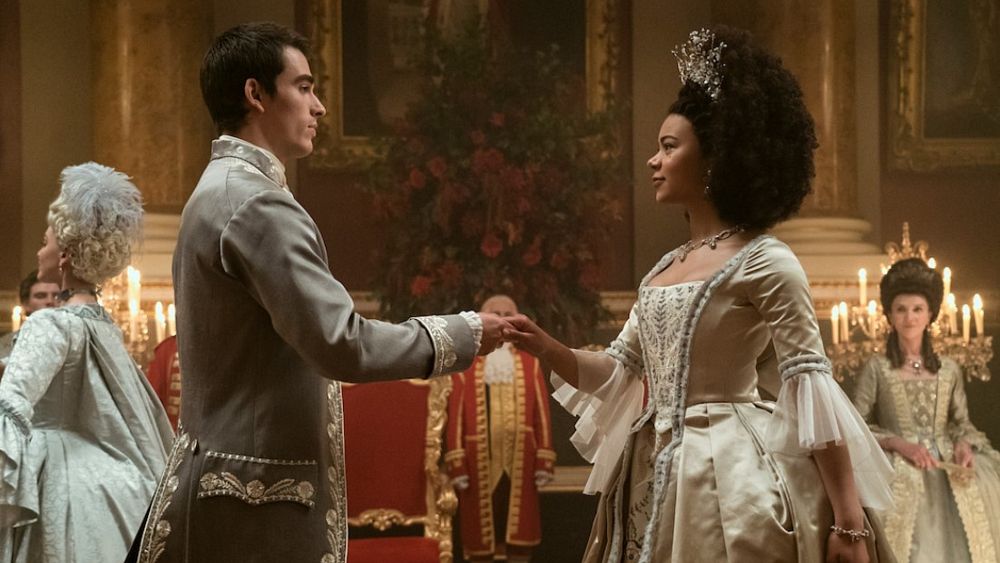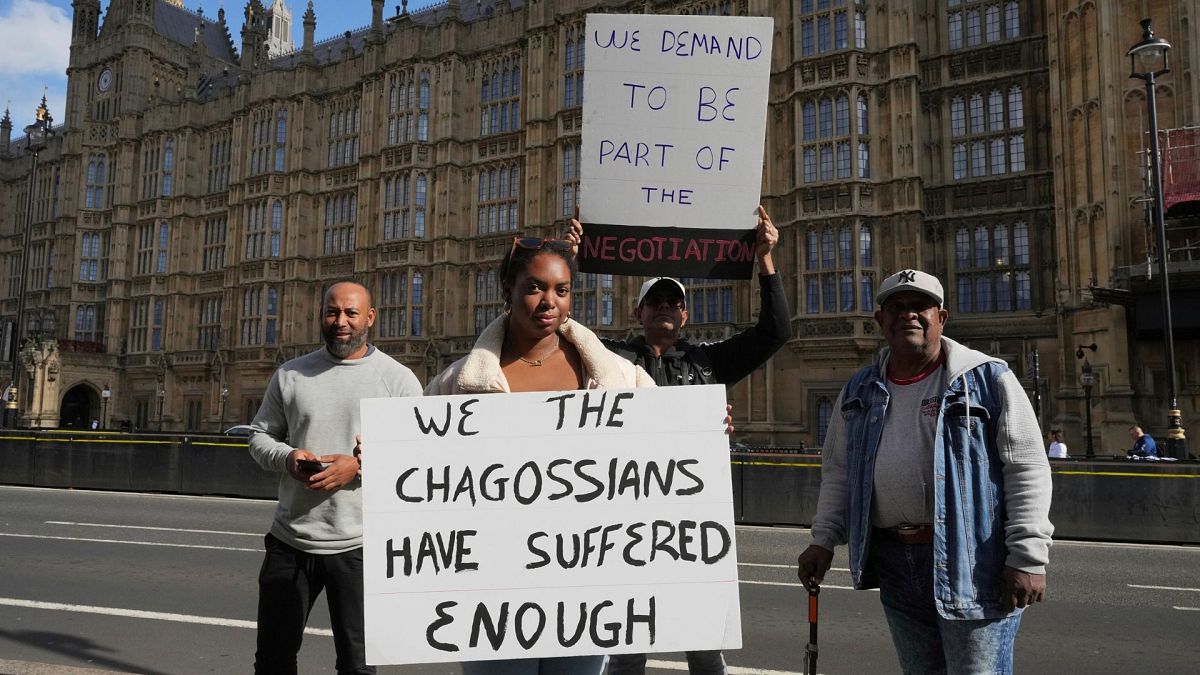In vivid colour: Do Black Queens in Bridgeton and Cleopatra matter?

After recent casting decisions for historical figures drew contention, we spoke to experts to hear about the history of colour-blind casting.
Last week, Netflix aired its new show, a spin-off from its wildly popular Bridgerton series, Queen Charlotte: A Bridgerton Story. A fictional retelling of the real Queen Charlotte’s rise to power in the 18th century, it immediately set certain corners of the media alight with its decision to cast the Black British actor India Amarteifio in the role of the former Queen of Great Britain and Ireland.
A similar reaction also came recently when Netflix cast Black British actor Adele James in the title role of its series Queen Cleopatra.
Even despite Queen Charlotte’s opening credits stating “It is not a history lesson. It is fiction inspired by fact,” it seems that every time a Black actor is cast in a role that might not have historically looked like them, uproar follows.
But was this always the case? When looking back at Black actors in “white” roles, there’s a rich stage history of Black actors celebrated for their turns at classic parts.
Historical game-changers
An early example is that of Minette and Lise, two half-sisters who grew up in the French slave colony of Saint-Domingue (present-day Haiti). In the 1780s they played multiple lead roles in spoken drama and opéra-comique in Saint-Domingue, as well as performing in Baltimore and New Orleans.
Then in the 19th century, Ira Aldridge was an African-American actor, born in New York, who moved to the UK to find better work. In England, he took to the stage in the title role of Shakespeare’s Othello. While Othello is a Moorish General, Aldridge also took on roles of Shakespearean characters who are presumed to be white.
Looking through the history books though, Professor Julia Prest, the Deputy Head of School and Professor of French and Caribbean Studies at the University of St Andrews finds that reviewers weren’t always kind to these early performers.
“Most of the reviews that I have read of Minette, Lise and Aldridge’s performances are double-edged: on the one hand, they acknowledge the performers’ talent; on the other, they are laced with racist assumptions, expressing surprise that people of African ancestry could be such good actors,” Prest says, adding, “some responses are simply racist and reactionary.”
At one point, the theatre Aldridge performed at in the UK was shut down due to huge backlash against a Black actor playing Shakespearean roles. Although Aldridge struggled for acclaim in the UK, he had more success when he toured the European continent.
In the 1850s, Aldridge performed in venues from Belgium to Russia, playing multiple Shakespearean roles. When he died in 1867, he was in Łódź, Poland, preparing to play King Lear as he was finally old enough to act the part convincingly.
Poland even gave Aldridge the honour of a state funeral. “He was seen as probably the greatest actor living at that time,” says Professor Tony Howard, Emeritus Professor of English and Comparative Literary Studies at Warwick University. “It’s an example of the way that it was possible to be seen in your own right for your own talent in a way that unfortunately wasn’t possible in England and absolutely wasn’t possible in America.”
But why were Polish audiences so receptive to Aldridge? “Politically, there was a great sense of affinity with him, because he was understood as a refugee from slavery”, Howard expands, “His appeals for freedom and for justice meant a great deal in Poland particularly, which was a divided country under the Austro-Hungarian and Russian rule.”
In fact, the Russian Empire banned performances of King Lear after Alridge’s casting in it was announced, such was the potential power and influence that Aldridge held with audiences.
Going forward in history, there are countless examples of Black actors getting cast in presumed-white or historically white roles. From Orson Welles directing an all-Black cast of Macbeth on Broadway in the 1930s through to Michelle Terry, artistic director of London’s Globe Theatre in, announcing in 2017 that they would always ensure they are casting race-blind, gender-blind and disability-blind.
Colour-blind vs. colour-conscious
At this point, it’s important to note a couple of distinctions in terms. Colour-blind casting is the process by which casting directors purposely ignore an actor’s race in the casting process. This is an important process in changing how presumed-white characters get cast; one example is the casting of Noma Dumezweni in the role of Hermione in the stage version of Harry Potter and the Cursed Child.
By contrast, colour-conscious casting is when a casting director actively incorporates racial differences between the original text and the new interpretation when a different actor takes the spotlight. “Where colour-blind casting seeks, in theory, to ignore difference, colour-conscious casting acknowledges difference and uses it in ways that are aimed at enhancing the production and at making audiences think productively about the lives and experiences of people of colour,” Julia Prest explains.
A great example of colour-conscious casting was the London Young Vic’s revival of Arthur Miller’s Death of a Salesman in 2019. With Black actors playing the Loman family, the power dynamics working against the protagonist were heightened to new levels. “Many would-be inclusive theatre companies are now embracing colour-conscious casting rather than colour-blind casting,” Prest continues.
Particularly in the case of historical drama like Queen Charlotte and Queen Cleopatra, casting non-White actors in the lead roles creates an engagement with history and the literary canon that is more inclusive, and can put modern racial dynamics into a broader artistic conversation, suggests Professor Harvey Young, Dean of the College of Fine Arts at Boston University.
“There’s these epic stories, in which the authors who conceived them, could not conceive of non-white actors playing those roles”, Young says. He adds that, in their time, “the present day diversity of London or New York was not the same”.
Yet many of these characters – whether in Shakespeare or more modern stories – have taken on mythic roles. “They circulate so much that I think there’s less of a sense of preciousness about who plays,” Young suggests. He cites Hamilton casting a Black George Washington: “Because you still have this idea of who George Washington is, and people have seen so many different iterations of him, it really doesn’t make a difference who plays that role. It’s open for interpretation”.
Re-interpreting the past
Sometimes casting a Black actor in a historical role can even be a purposeful artistic discussion with an overlooked racial element of history. While there is a decent amount of knowledge of Cleopatra’s paternal lineage, the same can’t be said for her maternal lineage. As a queen of the North African Empire, casting a Black actor has more historical validity than casting, for example, the white Joel Edgerton as Ramses II in 2014’s Exodus: Gods and Kings.
Similarly in Queen Charlotte’s case, there are some family links that suggest she had some Black ancestry. Although they may be tenuous, Young points out that these are examples where Netflix has chosen to “dial up” a historical lens to create a modern narrative around a genuine historic talking point.
As to why colour-blind or colour-conscious casting for historical drama is so important is also in the ways fiction and the media in general portray the values of present society. Diversifying historical dramas can create a broader conversation about the role of marginalised people within the fabric of a society.
“What does it mean in terms of one’s claim to nation and the cultural inheritances of the stories that you grew up with as the stories of your own nation, even though your complexion looks different to the person who wrote the story 200 years ago?” Young says, “I think that everyone has a sense of a desire and a need to claim a connection to the history of the nation in which they live and reside.”
“The tension is, how do you access it? How do you share those stories? Ideally, we would live in a world in which people would say that anyone can have a claim to these stories because we want everyone to see themselves in the nation’s history”, Young adds.
While there are still voices decrying colour-blind casting decisions similar to those Ira Aldridge faced in the 19th century, the tides are changing increasingly as casting departments diversify. Finally, Howard notes that the point isn’t to distort the past, but instead it’s about changing rigid attitudes about the past in order to create a new future: “It’s about imagining things which should have happened but didn’t and inviting you to join in the game. If you can play with the past like that, you can play games with the present and the future too”.
Source: Euro News















